“Absorbing, mysterious, of infinite richness, this life.”
― Virginia Woolf, Mrs. Dalloway
Spring is nigh—so say the birds, the bees, and whisperings of the sabbat, Ostara. Around March 20th, Pagan and Earth-centric communities in the Northern Hemisphere will host rituals and gatherings for the Spring Equinox. In the Southern Hemisphere, people light candles for Mabon and the return of autumn.
Traditionally, equinoxes are markers of time, symbolizing balance, unity, and change. They are invitations to turn inward and ask where we're supported. Are we happy? How do we feel (emotionally, physically, spiritually)? Do we desire more alone time, space, or community? What feels overbearing, out-of-sync, and keeps us separated from our dreams?
Because no matter the season or the setbacks, we must remember our dreams. For many humans, these visions of what-could-be keep us moving, motivated, and inspired to be a little better, a little wiser, and a little kinder than the day before.
In some modern magical communities, the Spring Equinox is celebrated alongside Ostara. Ostara is sometimes referenced as a type of “Pagan Easter,” when families celebrate the turn of the wheel by decorating eggs, engaging in floromancy (divination with flowers), and revisiting their favorite seasonal folklore.
While the origin of Ostara will forever be elusive (like all good stories), there’s a springtime story popularized by the Brothers Grimm about a Germanic goddess with the same name – sometimes spelled Ēostre.
Once upon a time, just before the Spring Equinox, Ēostre spotted a bird.
The bird wasn't in a nest or perched on a tree but shivering on the ground, nearly frozen. A goddess of the dawn, Ēostre noticed the creature’s light growing dim. She knew she needed to do something drastic, so Ēostre transformed the bird into a hare. Wrapped in the hare’s cozy pelt, the animal survived and, curiously, maintained its ability to lay eggs. To thank the goddess for saving its life, the hare began decorating eggs and planting them in the wilds of spring, hoping the goddess would find them.
Whether Ēostre and her sabbat are modern inventions or fragments of ancient goddesses of dawn and their season is heavily debated come the Spring Equinox. How we see it, Ēostre story is a springtime spell for hope, creation, and transformation. Not only is the goddess’s friend, the hare, symbolic of spring, as this creature is especially restless during March (the start of their rutting season), but Eostre is also the one who receives its mysterious eggs — containers for potentiality and immortality. In many mythic traditions, the world was born from a cosmic egg.
“Don’t ask, ‘Which came first, the chicken or the egg?’ It’s a dead giveaway that you’re a ninny. Of course the egg came first. Before there were any eggs, before there was anything at all, there was the night sky and the stars. And from the stars, the World Egg was born. Each of the seventy-seven Sister Stars took turns brooding over the egg, nestling against it, turning it over, gently warming it until, one day, it hatched. And from the egg was born the sun, the moon, the earth, the World Tree, the plants, the animals, the spirits, and the first people.”
Baba Yaga’s Book of Witchcraft: Slavic Magic from the Witch of the Woods, Madame Pamita
In another springtime story, a hunter named Oisín shoots a hare.
The hare is injured but alive and takes off into the woods. Oisín follows the creature’s tracks, but when he spots his prize, instead of a hare writhing in pain, he finds a woman sitting on a throne. There is no animal in sight, although the woman possesses a suspicious wound on her leg…
The High Deeds of Finn and other Bardic Romances of Ancient Ireland, by T. W. Rolleston, Illustrated by Stephen Reid
Oisín was the leader of the Fianna, a band of hunters who lived and trained in the wilds of medieval Ireland. According to Gaelic folklore, Oisín stumbled upon a witch that day in the woods, but others insist the shapeshifter was more likely a fairy. Perhaps she was a mortal who’d been cursed, like in the case of Oisín’s mother, Sadhbh.
Sadhbh was a young woman who refused a marriage proposal from an evil druid (although some say it was a member of the Tuatha de Danaan). As punishment for rejecting him, the druid transformed Sadhbh into a doe. The woods are both a haven and a trap for deer, and one day, the hounds of a hero named Finn MacCool (Fionn mac Cumhaill) caught Sadhbh’s scent and chased her through the trees. When Finn finally corned the animal, the enchantment was momentarily lifted. The hunter saw Sadhbh’s face, and it was love at first sight.
Finn was not only a hunter, he was a silver-tongued poet and seer. He and Sadhbh spent the night in the heart of the woods, gazing at the stars and discussing how they might permanently remove her curse. When dawn broke, Sadhbh had already changed back into a doe. While Finn snored in their bed of ferns and smiling flowers, Sabhbh kissed him goodbye and disappeared into the woods. Finn went back to that spot regularly to search for his lover, but he never saw her again. However, several months later, Finn found an abandoned fawn sleeping in the same place where he’d first laid eyes on Sadhbh. Finn named the animal Oisin, meaning “young deer,” in memory of his mother.
“And there I will give you a hundred hounds;
No mightier creatures bay at the moon;
And a hundred robes of murmuring silk,
And a hundred calves and a hundred sheep
Whose long wool whiter than sea-froth flows,
And a hundred spears and a hundred bows,
And oil and wine and honey and milk,
And always never-anxious sleep;”
The Wanderings of Oisin: Book I, William Butler Yeats
In other versions of this story, Sabhbh orchestrates her capture by Finn. She wants the hunter to trap her because only when standing on the land of the famed Fianna warriors will her true form be revealed. Sadhbh the deer lets herself be cornered by Finn’s hounds in the woods, who don’t harm her because they sense her enchantment. Once Finn brings the deer home and shows off his successful hunt, the curse is lifted, and Sadhbh is, once again, a beautiful maiden.
Like his father, Finn, Oisin was a hero, hunter, and legendary poet. He was an ally to the Fae Folk and a guardian of deer, hares, and other woodland creatures.
Like fairies, hares are friends of witches, which means they know the Goddess. Sacred to Artemis, Aphrodite, and Hecate, their images were engraved into ancient tombs, symbolizing endurance and resilience through each transformation.
“A gathering of hares is called a Hares Parliament, and even today, rumor says this isn't a meeting between animals but a gathering of witches. Some of us might identify Hecate with this swift messenger, and if we do, she likely goes by the name Harek. A rabbit-faced deity, Harek was believed to be Hecate's German equivalent, and instead of hounds, she was flanked by hares. Like dogs, Hares have long been associated with the moon and the Underworld, sometimes serving as its protector. Followers of the mythical hare would carve its image into an amulet and wear it for agility, prophetic insight, and abundance.”
- “Hecate & the Hare": Spring Folklore for Witches”
So tell us, witches - how will you honor the hare this month? And the Spring Equinox? And the garden and the moon? Leave us a comment below. Like our fellow Green Witches, we’ll be seeding garden spells and reacquainting ourselves with the bees, the birds, and all the creatures emerging from their winter slumber. Spring is nigh.

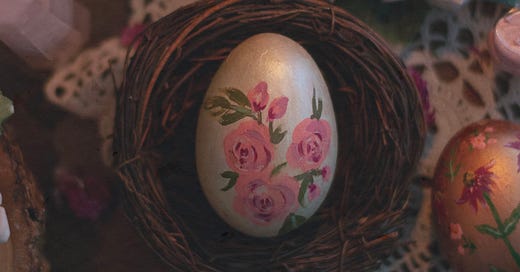



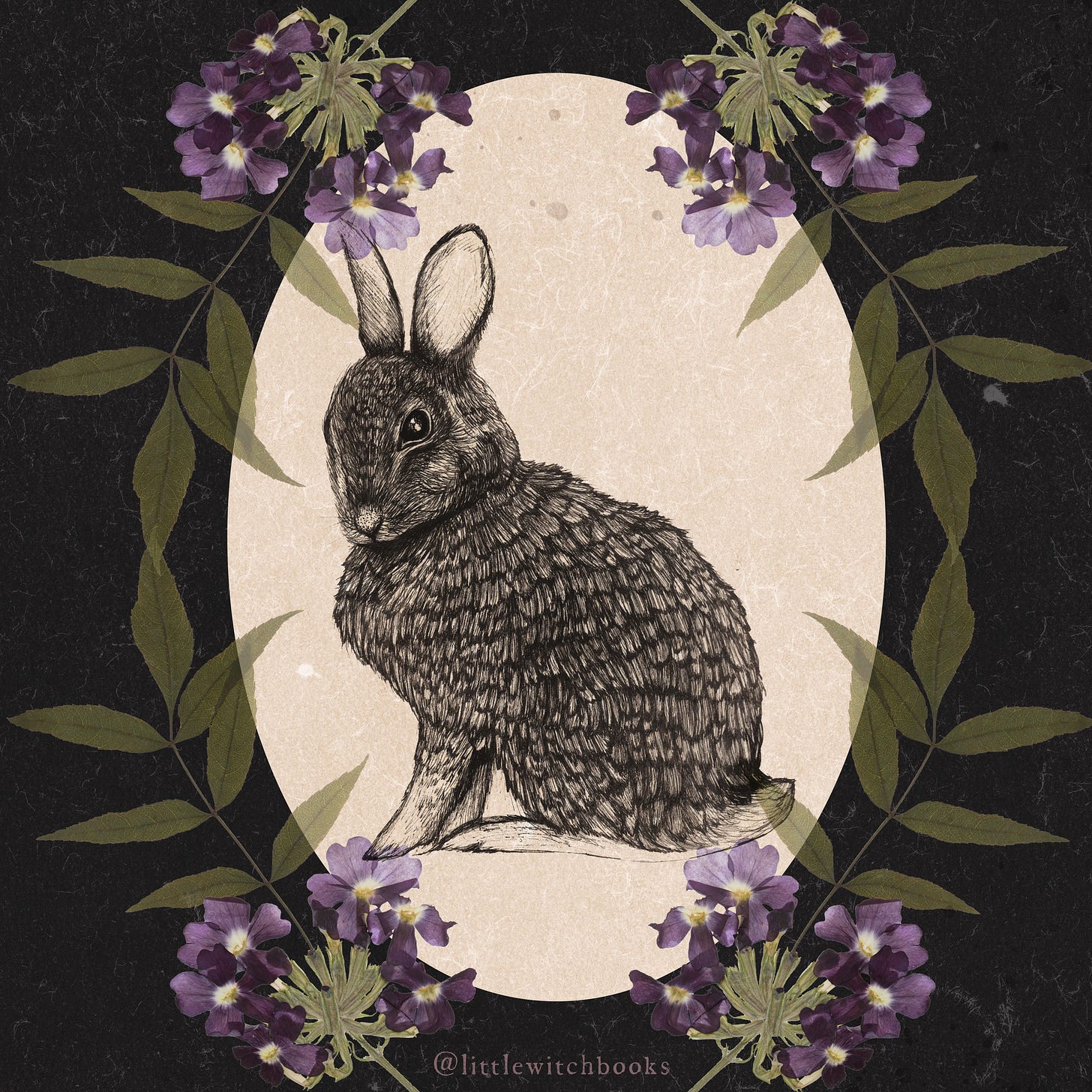
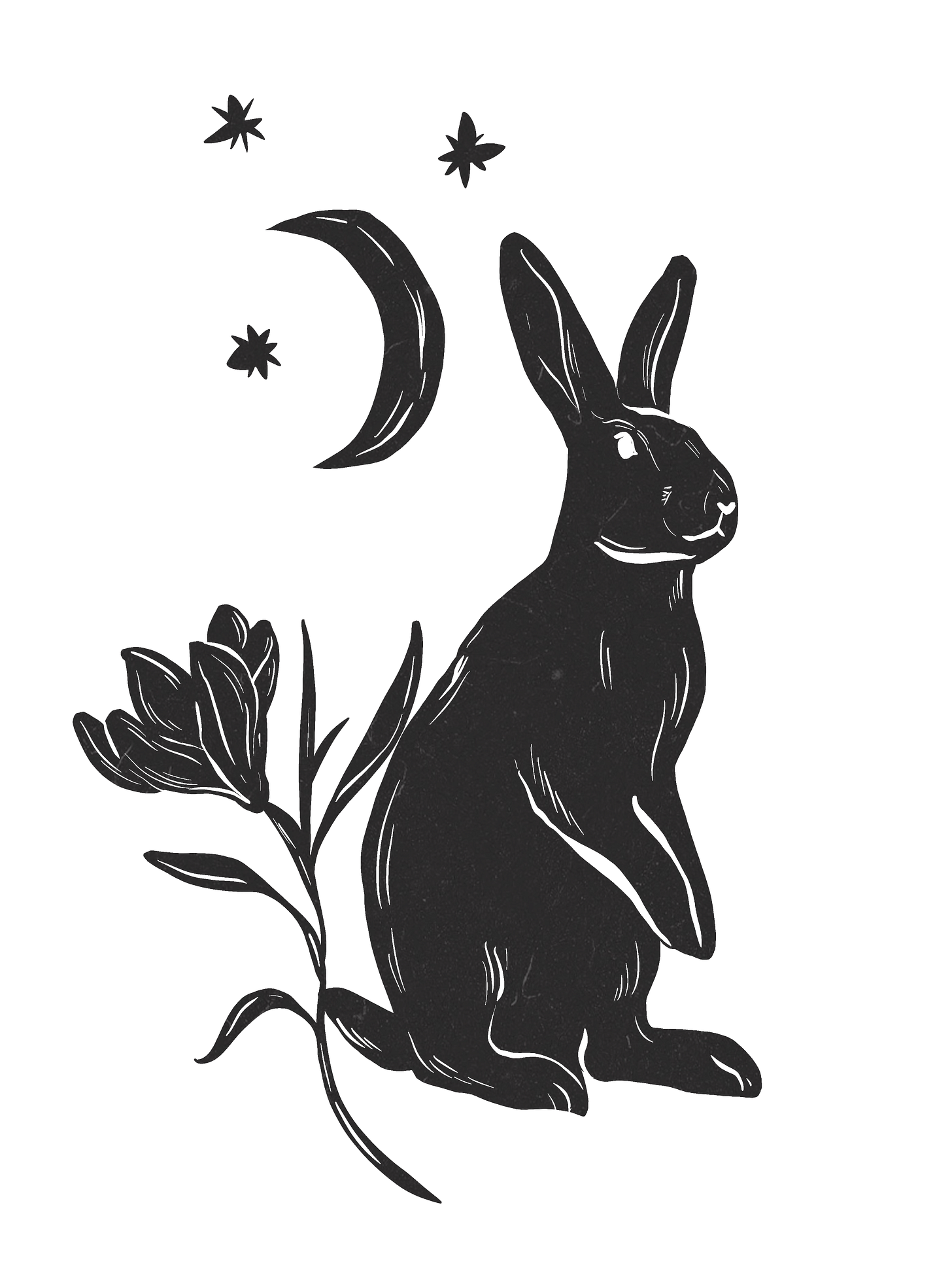
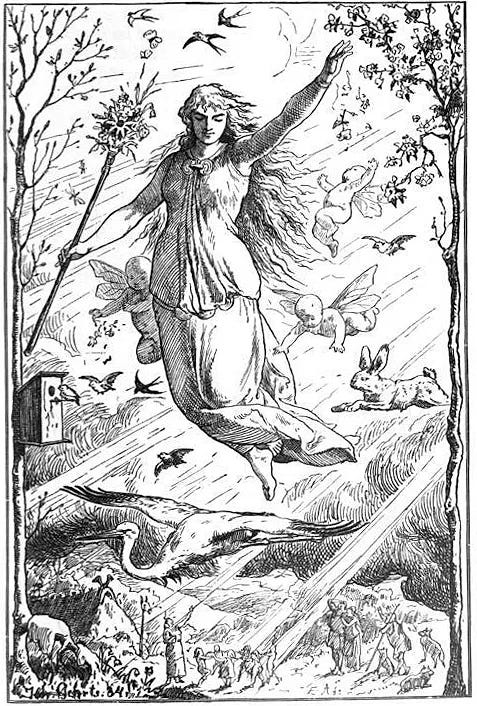
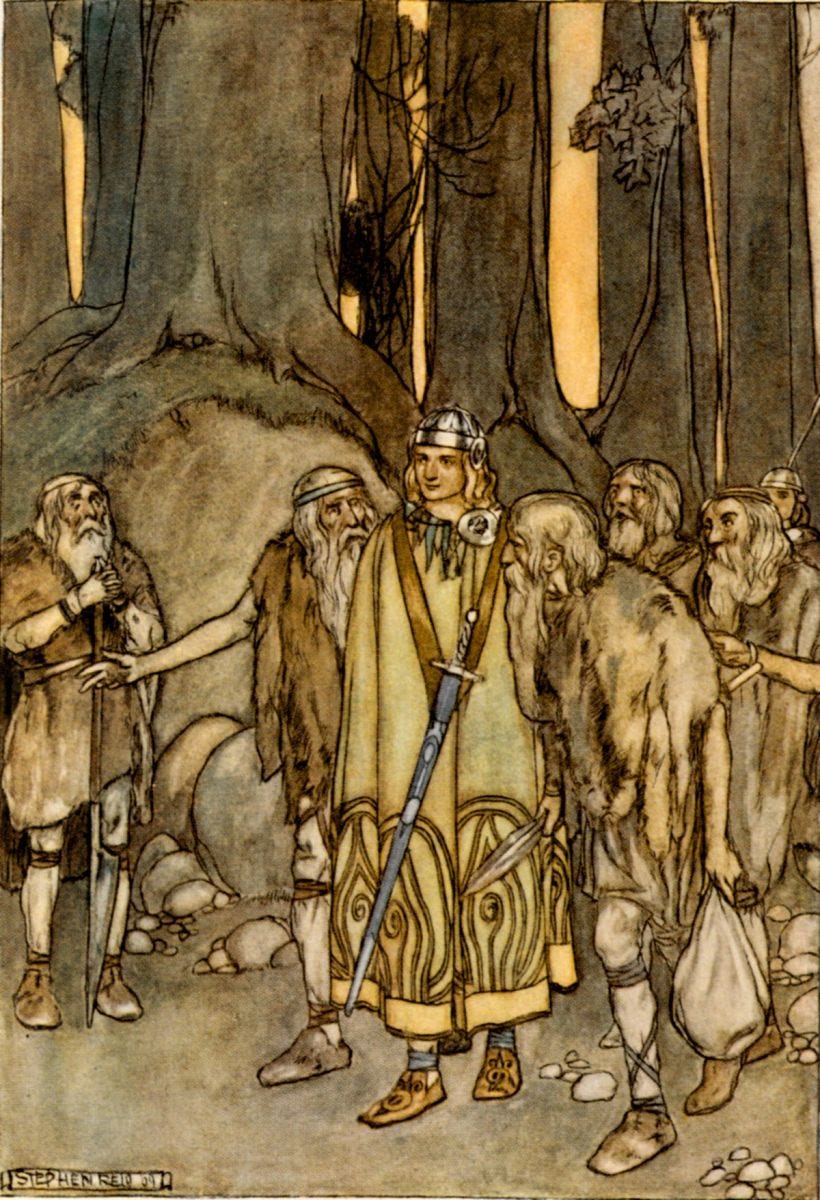

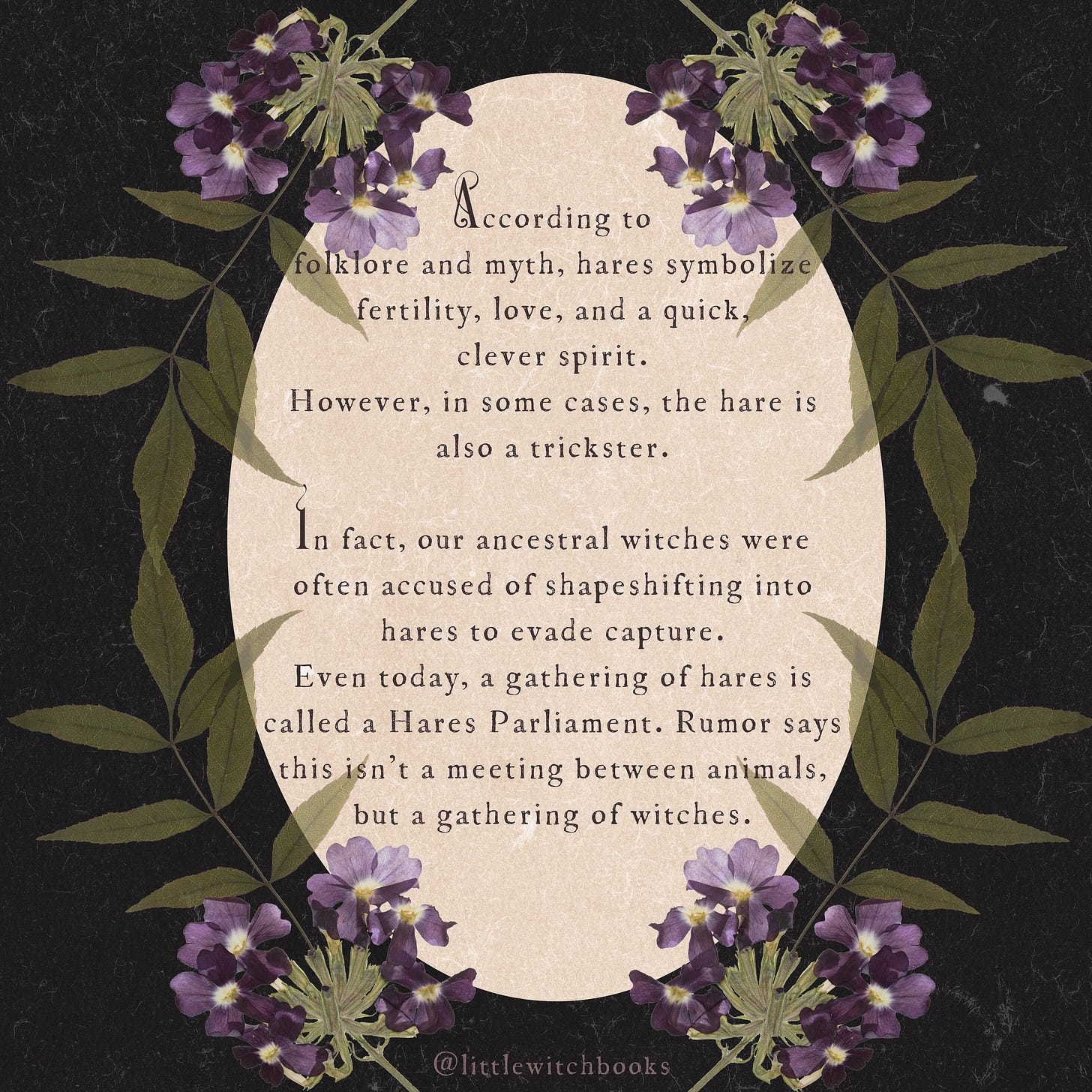
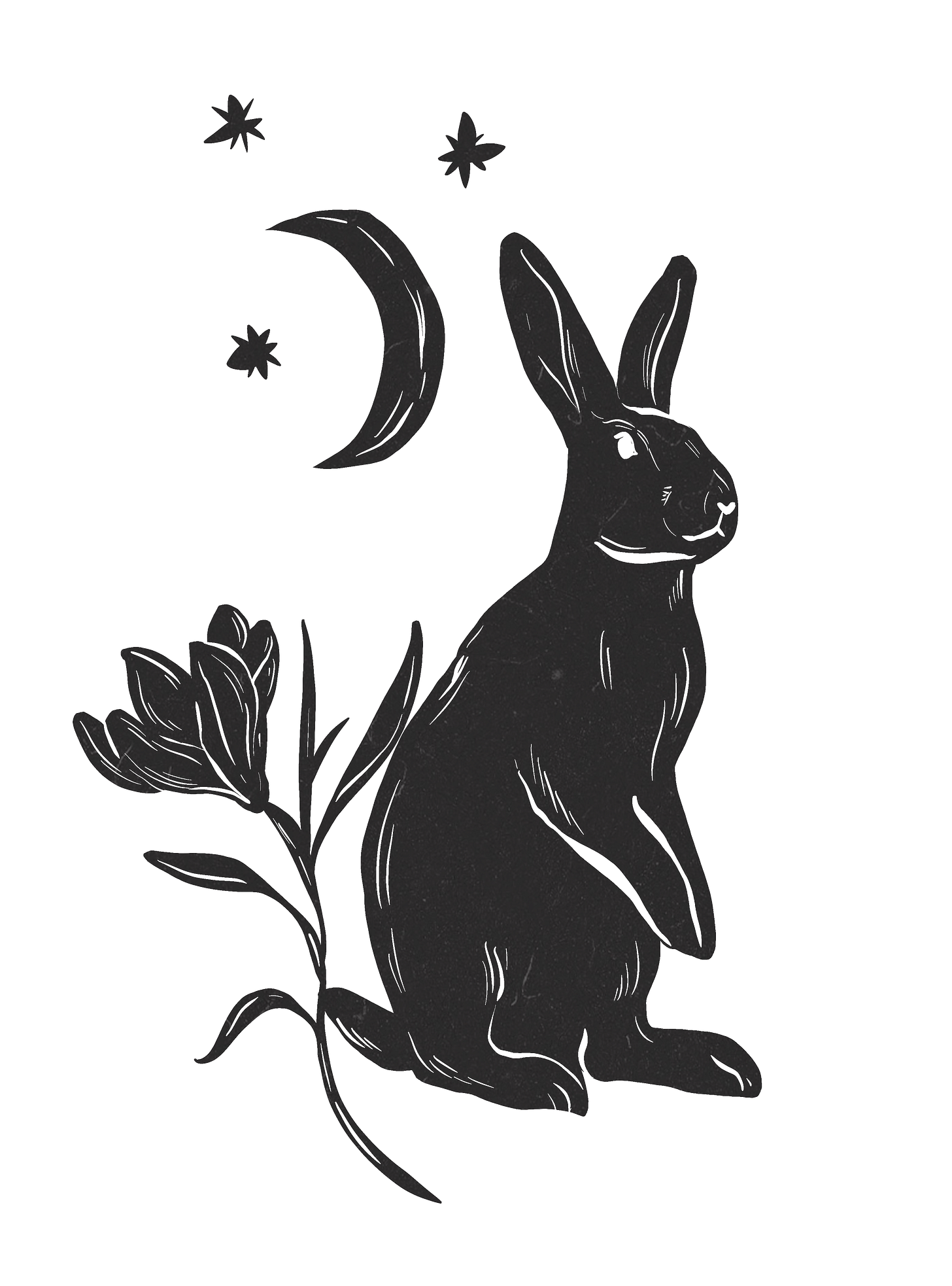
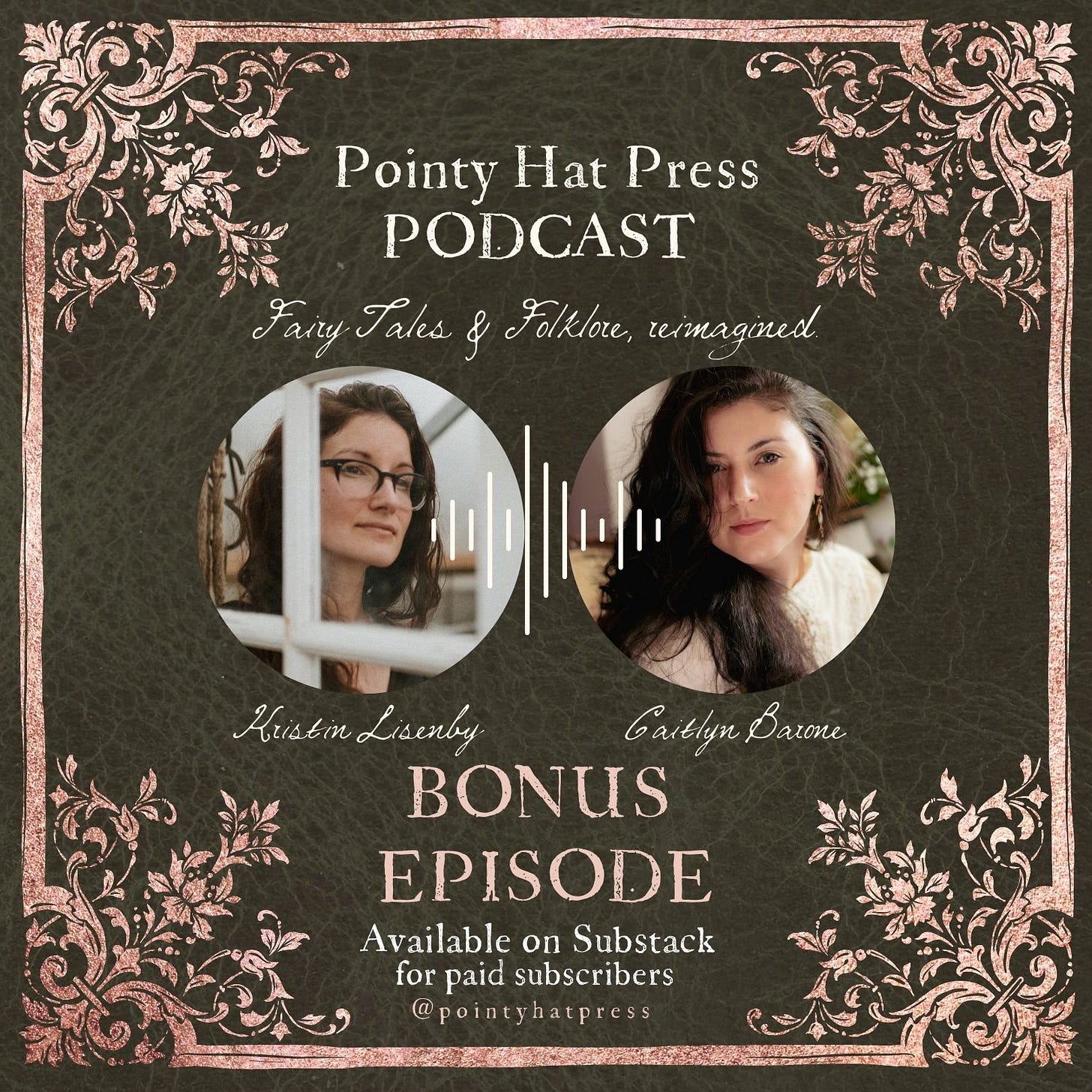
This is beautiful, thank you, I was just working the beautiful archetypes of the bird and the hare into my Ostara workshop yesterday, wondering if other practitioners honor them this time a year in some shape or form and voilà, this popped up and what a lovely read! ✨🍃🙌🏼
Love the Baba Yaga book! I’m in the southern hem now so I get confuse about what to celebrate when, but this was a gorgeous read 🥰